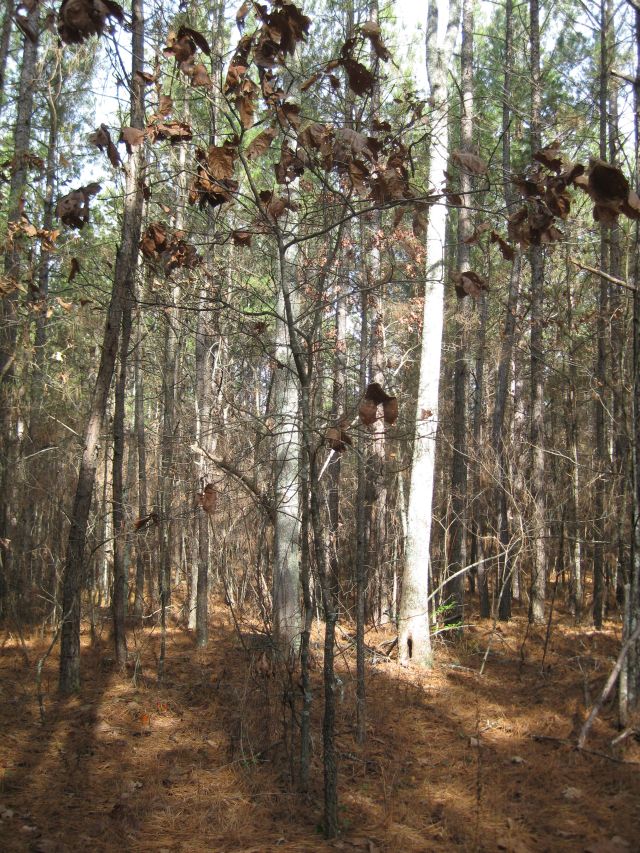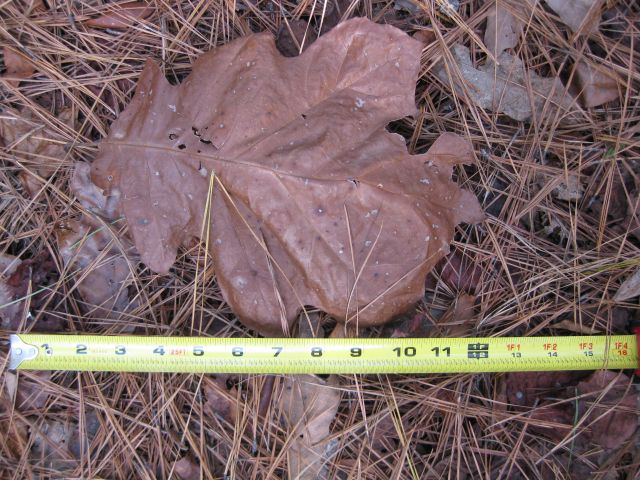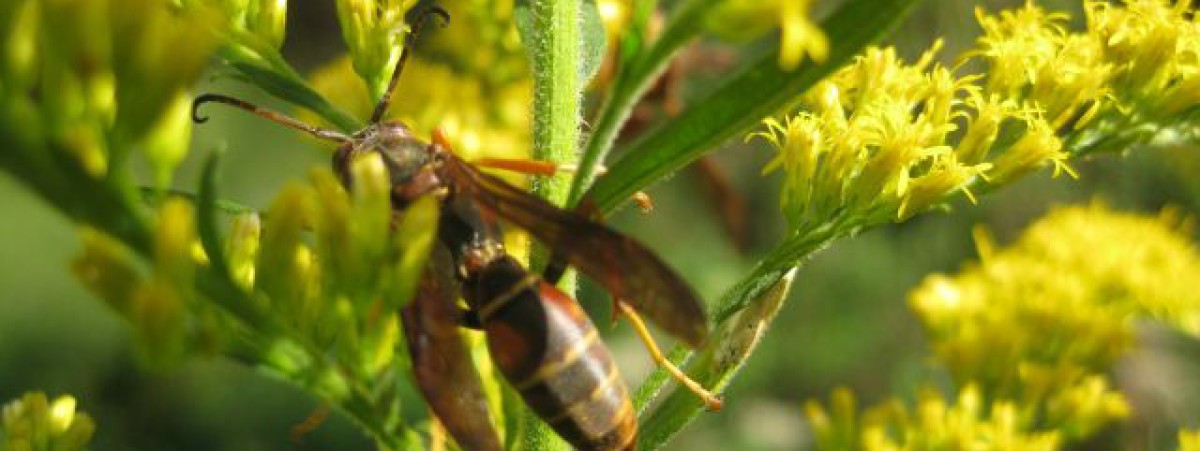Yesterday, while walking through the woods, I noticed a very large oak tree leaf. Automatically, I looked up and around for the parent and saw just large pines and then, on the side, a smallish 14 ft oak tree. Could this small tree have produced such a large leaf, I wondered. It still retained some leaves and indeed they were very large.

Now I know that oak trees will wait patiently in shrub form for an opening in the canopy above and then they spring to life. I have found 1ft high oak trees with 4 ft tap roots and know that a shrub like tree can be many years old. So to return to the riddle I hypothesized that the leaf size depends on the age of the tree and this smallish tree could be many years old. But that doesn’t work since a large nearby oak tree which I know is very old, has smallish leaves. And then, this morning, as I worked my way through my biology textbook, it fortuitously provided the answer.

Some variation within a species is due to genetic diversity within individuals but some is due to response to the environment and this is called “phenotypic plasticity” meaning that the plant (its roots, shoots or leaves) are plastic or changeable depending on environmental conditions. The textbook (Biological Science by Scott Freeman 3rd edition page 798) states that oak leaves are a prominent example of phenotypic plasticity. Shade leaves (grow in the shade) are big and sun leaves are small. Shade leaves provide a large surface in order to absorb as much sunlight as possible. So that’s the reason why the small oak tree has big oak leaves compared with high standing oak trees which have direct access to the sunlight.
But then, the question could be asked, if absorbing sunlight is the priority why shouldn’t a big oak tree also grow big leaves? Leaves lose water (transpiration) and the more exposure to the sun the more water loss. In the shade however, humidity is higher and water loss is less so the large oak tree leaf in the shade can capture more light with minimum loss of water.

I was interested in this comment because I recently bought a handmade basket in North Carolina that’s made from very LARGE oak leaves – if they weren’t trimmed across the bottom to fit the basket – they would have been about 14 inches long and over 6inches wide. I have never seen leaves of this size before. The only ones I found in the area where we stayed were regular sized leaves. Just curious as to why these are so very large and where they came from. The basket is lovely and much more stable than I thought it would be. I’d love to know what kind of oak produced these “giant” leaves.
Never seen a basket made from leaves – I wonder if the leaves were treated prior to use. If the basket was made in NC and you live in NC, next time you walk in the woods look out for a small oak sapling and you may find it has very large leaves.
I would love to know if you ever discovered which oak species this is. I live close to Washington DC and I have spent the better part of a day trying to figure out the species of this same exact tree when I tripped across your post. I have scoured several oak identification guides (some as extensive as a couple hundred pages) and nothing matches. Those rounded lobes are indicative of some sort of white oak, but the teeth/spines at the tip of each lobe say its a red oak species. I also found that the trees were bushy and small and had MASSIVE leaves. so far my results yielded a Georgiana Oak…..every single detail matches with the tree that you and I discovered separately, EXCEPT the size of the leaf and the natural habitat.
Thank you for your very interesting comment. I notice in the “Field Guide to Native Oak Species of Eastern North America” by J Stein and D Binion that the habitat of the Georgiana Oak is granitic outcrops and dry slopes approx 1,700 feet elevation. There are granite outcrops on my land and the elevation is approx 1,300 ft. My location corresponds with the areas identified on the habitat map on page 33. As for the size of the leaf, could it be due to factors mentioned in my post. A less intriguing solution could be that it is a hybrid. I read there are putative hybrids between Q. nigra and Q. georgiana – see Quercus georgiana M.A. Curtis by R Russell at http://www.internationaloaksociety.org.